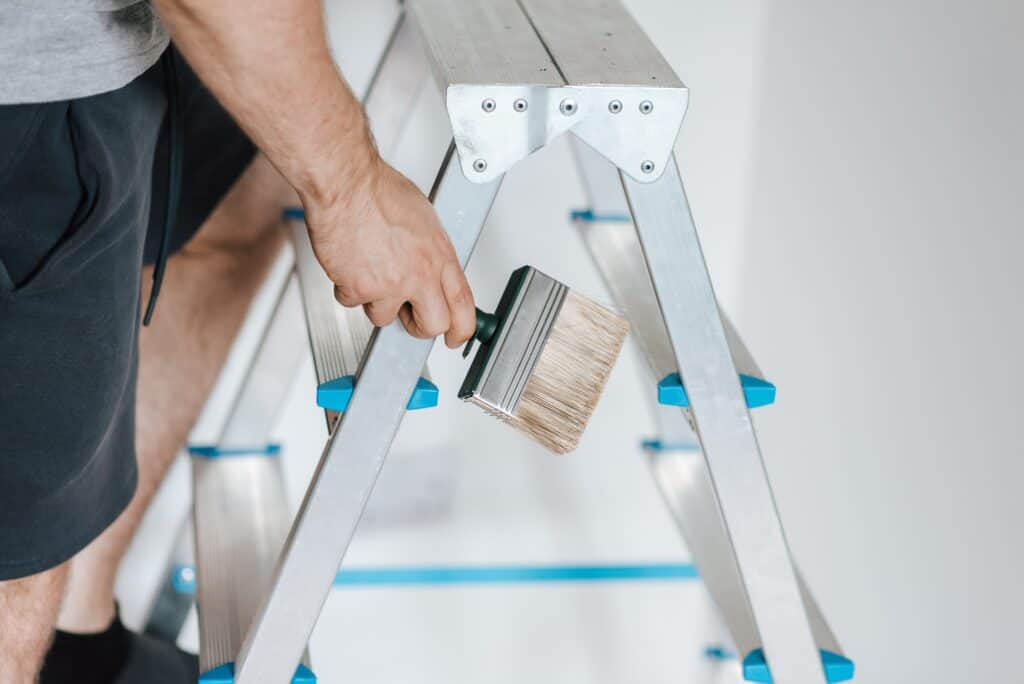
Selling a home as-is: What you need to know in 2025
In Texas, there are a few things you need to know about selling your home as-is. Depending on your situation, as is sales may or may not be the best option for you. In this blog post, we’ll go over the pros and cons of selling as-is in Texas. We’ll also provide you with some tips to help you sell your home as-is. So, if you’re thinking about selling your house in Texas, keep reading!
What does it mean to sell a home as-is?
Selling a house “as-is” in Texas means the buyer agrees to buy the home in its current condition, and the seller opts to sell as is without making any repairs. An “as-is” home will have no repairs or improvements made to it before closing.
Prepping a home to hit the market can cost a lot of time, energy, and money. Which is why many sellers try to sell their home “as-is” and avoid the hassle of repairs and improvements.
The idea of an as-is sale can appeal to sellers for a lot of reasons. Unfortunately a contract’s “as-is” clause can be confusing for some sellers. There are some grey areas that need consideration. We’ll discuss these throughout this blog post.
Types of Homes Sold As-Is
Homes sold as-is in Texas can vary widely in terms of their condition, age, and location. Some common types of homes that are often sold as-is include:
Fixer-uppers: These homes require significant repairs and renovations to make them habitable. They are often sold as-is because the seller may not have the resources or desire to make the necessary improvements.
Older homes: Homes that are 20-30 years old or more may be sold as-is due to their age and potential need for updates. These properties might have outdated systems or features that the seller is not willing to upgrade.
Foreclosed homes: Homes that have been repossessed by lenders due to non-payment of mortgages are often sold as-is. Lenders typically sell these properties quickly and without making any repairs.
Homes with structural issues: Properties with foundation problems, roof damage, or other significant structural issues may be sold as-is. These issues can be costly to fix, and sellers might prefer to sell the house as-is rather than invest in repairs.
Homes in need of cosmetic updates: Some homes may only require new flooring, painting, or other cosmetic updates. While these issues are less severe, sellers might still choose to sell the home as-is to avoid the hassle of making improvements.
How the “as-is” clause in Texas can be confusing
The “as-is” clause in Texas can be confusing for both home sellers and potential buyers. While it’s intended to protect sellers from liability for defects in the property, it can also create uncertainty for buyers who may not be aware of the property’s condition. To avoid confusion, it’s essential for sellers to disclose any known defects or issues with the property and for buyers to conduct thorough inspections before making an offer.
How the “as-is” clause in the Texas law can be confusing

The “as-is” clause on a standard Texas TREC contract can be confusing for some home-sellers. A buyer might check the box in the contract that says they are purchasing the home as-is. Yet, most buyers are still going to do their due diligence and get the home inspected before closing.
According to Texas law, sellers must disclose any known defects or issues with the property to avoid legal complications.
In Texas it’s common for buyers to have a 5-10 day “option period”. This gives the buyer an unrestricted right to stop the contract for any reason. The buyer would also get their earnest money back after terminating.
So, if an inspection discovers new problems with the house that the seller won’t repair, the buyer can walk away. Even if the buyer agreed to buy the property “as-is”. It’s common for the buyer to ask for repairs once they are under contract, even if they have agreed to buy the house as-is.
In fact, almost every purchase contract in Texas has the buyer agreeing to buy “as-is” by design. How can that be possible?
Well, lets look at the TREC 1-4 Residential Resale Purchase Agreement. This is most common contract in Texas when buying or selling a home. In the section titled “Acceptance of Property Condition”, there are only two options.
Accept the home “as-is”
Enter the repairs or treatments you are requesting the seller repair before closing.
This is tricky because buyers don’t get the home inspected until AFTER they are under contract. Unless the seller has already disclosed issues with the home, it is tough for buyers to know what repairs to ask for. It is also common for homes to have issues that even the seller may not be aware of. So, there could be defective items that are not listed on the seller’s disclosure.
Sellers have to understand that buyers are not pro’s when it comes to potential house issues. A buyer may fully intend to buy “as-is” until they uncover certain issues. It’s fair to see why they might change their mind after finding a potentially costly issue.
Cons of pushing for an “as-is” sale as a seller

First off, it can be a big red flag if a seller is demanding a home sale be as-is. Buyers may think that seller’s are hiding defects in the home. A buyer will want to be able to negotiate items discovered during an inspection.
Sellers must remember that even with an “as-is” sale, they still have to disclose everything about the property. Seller’s do this through a seller’s disclosure notice which is very thorough to say the least. Failing to disclose known defects about a property is the #1 one reason a seller’s have legal trouble. Consulting a real estate attorney can help ensure that all disclosures are made correctly and that you are protected from potential legal issues.
If a home has issues and the buyer becomes aware of them, that can’t hurt the seller’s negotiating position. The buyer is going to want to get a deal on the house if they know are inheriting problems they have to fix.
Here is a breakdown of a few reasons why an as-is sale can hurt a seller in the end:
A lower final sale price
A smaller pool of buyers willing to take on repairs
Increased likelihood of the deal falling apart during the option period
Increased days on market
How to be successful selling a home “as-is”
If after reading all this, you are still adamant that you want to sell your house as-is. Follow these steps to ensure everything runs smoothly.
Make sure the buyer understands that the home is being sold “as-is”. This means the seller WON’T offer any repairs or credits. Remember, the majority of contracts are technically “as-is” so make sure it’s clear on both sides. Ensuring the home is functional and well-maintained can make it more appealing to a potential buyer.
Disclose, disclose, disclose. If you demand an “as-is” sale and the buyer uncovers a lot of issues, they will lose trust and likely bail on the deal.
Understand how the extent of any damage or issues with your home could affect the buyer. For example, if the buyer is getting an FHA or VA loan, there are certain conditions that the lender will refuse to issue the loan unless repairs are made. These typically include:
Active or conducive conditions to wood destroying insects.
Water penetration or mold.
Blatant structural (foundation) problems.
Missing flooring or essential appliances. The home needs to be “livable” at the time of closing.
Understand the cost to make these repairs and provide quotes if you can. This will protect you from a predatory investor telling you the repairs will be more expensive than they actually are. It will also help a buyer work the repairs in their offer and make them more comfortable with the budget.
Be patient and ready for some opportunistic investors or tire kickers. People are always on the lookout for great deals and you are going to be a prime candidate for negotiations. Instead of getting frustrated, get educated and be ready for it so you have a strong counter argument.
To close everything out. As a broker with 20 years of experience and 1000’s of transactions under my belt, my advice is to not be too abrasive when demanding an “as-is” sale.
It’s ok to let the buyer know that you have priced in the current condition of the home and are not looking to renegotiate smaller ticky tacky items after the inspection. But, every seller should be open minded and understand that there can be issues with their home that they don’t know about.
Negotiations are a part of real estate. It’s much better to be under contract and in a position to negotiate rather than scaring off buyers by seeming too obtuse and unwilling to budge.
Pricing Strategies for an As-Is Sale
Pricing a home for an as-is sale in Texas requires careful consideration of the property’s condition, location, and market value. Here are some pricing strategies to consider:
Discounted price: Sellers may need to discount the price of the home to reflect its as-is condition. This can attract buyers who are willing to take on the necessary repairs.
Comparative market analysis (CMA): Conducting a CMA can help determine the fair market value of the home by comparing it to similar properties in the local real estate market.
Repair estimates: Obtaining repair estimates for any known defects or issues can help determine the home’s value. This information can be shared with potential buyers to justify the asking price.
Market conditions: Understanding the local real estate market conditions, including the supply and demand of homes, can help determine the optimal price for the home. In a seller’s market, you might be able to get a higher price even for an as-is property.
Pre-Listing Inspections and Disclosures
Pre-listing inspections and disclosures are essential for home sellers in Texas who are selling their homes as-is. Here are some reasons why:
Transparency: Pre-listing inspections and disclosures provide transparency for potential buyers, allowing them to make informed decisions about the property. This can build trust and reduce the likelihood of surprises during the transaction.
Reduced liability: By disclosing known defects or issues, sellers can reduce their liability for any potential problems that may arise after the sale. This can protect you from legal disputes and ensure a smoother transaction.
Increased credibility: Pre-listing inspections and disclosures can increase the credibility of the seller and the real estate agent, making the sale process smoother. Buyers are more likely to trust a seller who is upfront about the property’s condition.
Listing Your Home with a Real Estate Agent
Listing your home with a real estate agent can be beneficial when selling a home as-is in Texas. Here are some reasons why:
Market expertise: Real estate agents have knowledge of the local market and can help determine the optimal price for the home. They can provide valuable insights into market trends and buyer preferences.
Marketing skills: Agents can market the home effectively, highlighting its best features and attracting potential buyers. They have access to multiple listing services (MLS) and other marketing tools to reach a wide audience.
Negotiation skills: Agents can negotiate with potential buyers, ensuring that the seller gets the best possible price for the home. They can handle counteroffers and navigate the complexities of the negotiation process.
Paperwork and disclosures: Agents can handle the paperwork and disclosures required for the sale, ensuring that everything is done correctly and efficiently. This can save you time and reduce the risk of errors that could delay the sale.
The Bottom Line
Selling your home “as-is” can be a great way to save time and money, but it’s important to understand what that means for you as the seller. The “as-is” clause in the Texas state contract can be confusing, so make sure you consult with an experienced real estate agent before signing anything. There are some potential drawbacks to selling “as-is,” but if you do your homework and price your home correctly, you can be successful. ListingSpark is here to help with all of your real estate needs – contact us today!
Related Posts
How Do You Sell a House Without a Realtor in Georgia?
Selling a house without a realtor in Georgia is entirely possible—and it can save you thousands in real estate commission fees. But before jumping into the FSBO (For Sale By Owner) process, it’s important to…
What Not To Fix When Selling a House: 5 Things in 2025
The real estate landscape has transformed dramatically following the National Association of Realtors’ (NAR) settlement in March 2024. These commission structure changes officially took effect on August 17, 2024, and we’re now seeing their real-world…
How to Avoid Hurting Your Home Appraisal: Cleaning, Updating & Fixing
Renovating your home is a strategic investment aimed at enhancing its comfort and market value. However, sellers should approach these projects thoughtfully to avoid potential pitfalls that could negatively impact your property’s appraisal. For instance,…




